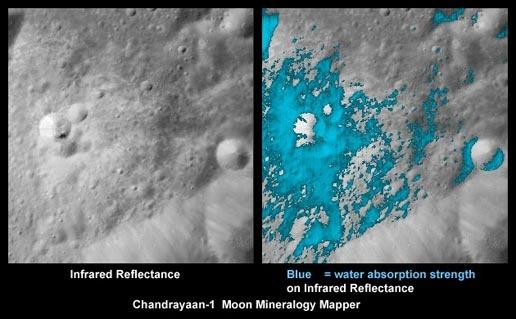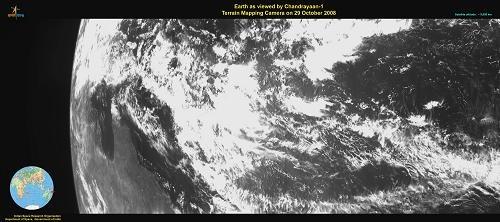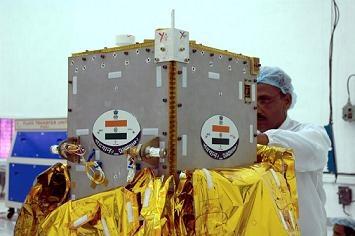Chandrayaan-1 was the first Indian lunar probe under the Chandrayaan program. It was launched by the Indian Space Research Organisation (ISRO) in October 2008, and operated until August 2009. The mission included a lunar orbiter and an impactor. India launched the spacecraft using a PSLV-XL rocket on 22 October 2008 at 00:52 UTC from Satish Dhawan Space Centre, at Sriharikota, Andhra Pradesh. The mission was a major boost to India's space program,[8] as India researched and developed indigenous technology to explore the Moon. The vehicle was inserted into lunar orbit on 8 November 2008.[10]
On 14 November 2008, the Moon Impact Probe separated from the Chandrayaan orbiter at 14:36 UTC and struck the south pole in a controlled manner, making India the fourth country to place its flag insignia on the Moon.[11] The probe hit near the crater Shackleton at 15:01 UTC. The location of impact was named Jawahar Point.
The estimated cost for the project was ₹386 crore (US$48 million).
It was intended to survey the lunar surface over a two-year period, to produce a complete map of the chemical composition at the surface and three-dimensional topography. The polar regions are of special interest as they might contain water ice. Among its many achievements was the discovery of widespread presence of water molecules in lunar soil.
After almost a year, the orbiter started suffering from several technical issues including failure of the star tracker and poor thermal shielding; Chandrayaan-1 stopped communicating at about 20:00 UTC on 28 August 2009, shortly after which the ISRO officially declared that the mission was over. Chandrayaan-1 operated for 312 days as opposed to the intended two years, however the mission achieved most of its scientific objectives including detecting presence of Lunar Water.
On 2 July 2016, NASA used ground-based radar systems to relocate Chandrayaan-1 in its lunar orbit, more than seven years after it shut down.[23][24] Repeated observations over the next three months allowed a precise determination of its orbit which varies between 150 and 270 km (93 and 168 mi) in altitude every two years.


